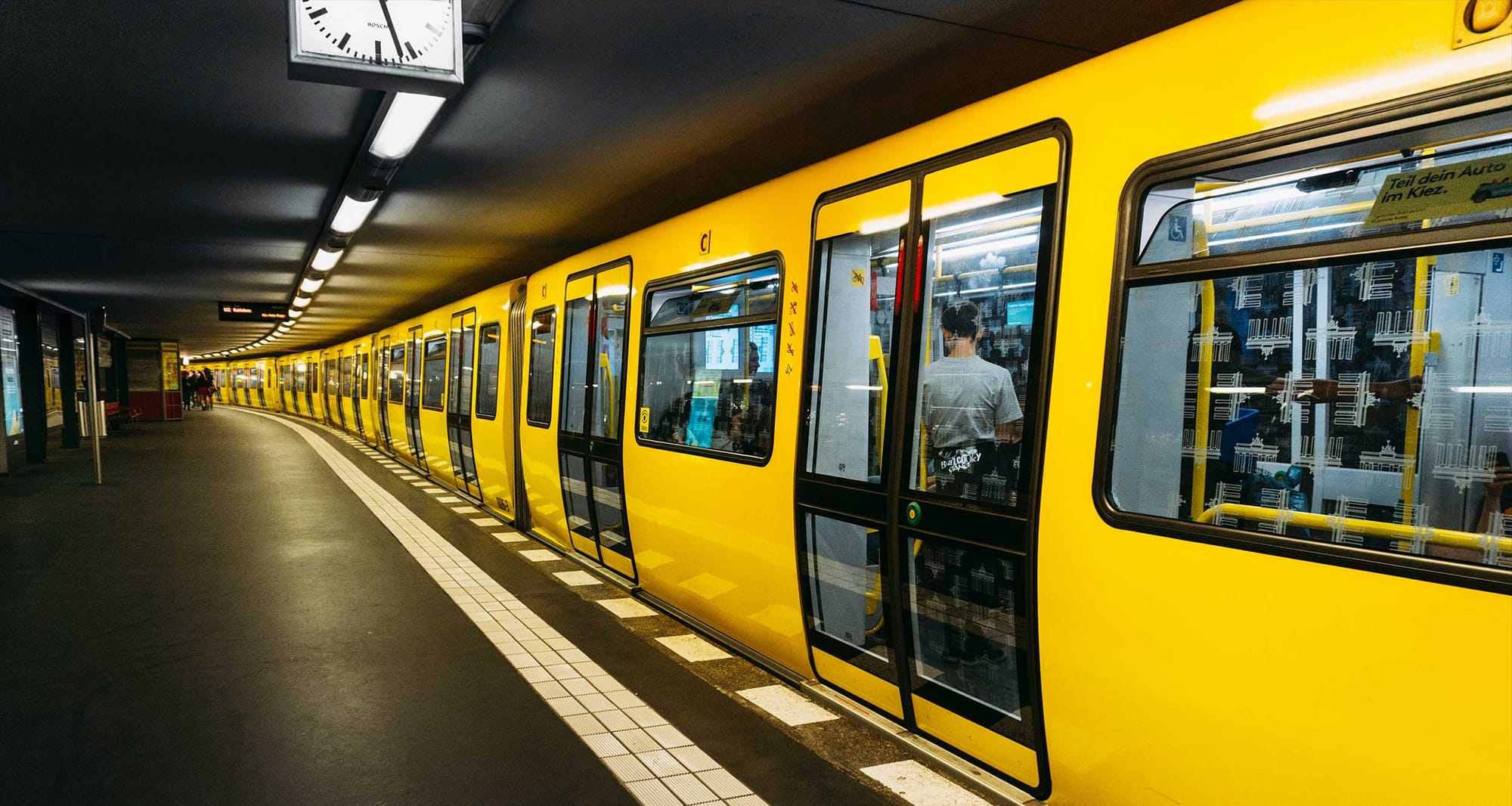
Berlin features one of the most wheelchair-friendly public transportation systems in the world. The two major metro rail systems, U-Bahn and S-Bahn, are accessible at the majority of stations in the City of Berlin. Trams and city bus services are entirely accessible to wheelchair users. There are a few important things you’ll need to know to make the most of your public transportation experience in Berlin, which I have shared below.
U-Bahn Subway
The U-Bahn subway system is composed of ten lines, numbered U1-U9 and U55. The system serves a total of 170 stations throughout the city and metropolitan area. Not all stations are wheelchair accessible due to the absence of elevators between the street and mezzanine level, or between the mezzanine level and platform. The following stations are NOT wheelchair accessible:
- Line U1: U Schleisisches Tor, U Gorlitzer Bahnhof, U Hallesches Tor, U Mockernbrucke, U Kurfurstenstr., U Kurfurstendamm
- Line U2: U Klosterstr., U Hausvogteiplatz, U Mohrenstr., U Ernst-Reuter-Platz, U Deutsche Oper, U Sophie-Charlotte-Platz, U Kaiserdamm, U Neu-Westend
- Line U3: U Augsburgerstr., U Spichenstr., U Rudesheimer Platz, U Podbielskiallee, U Thielplatz, U Oskar-Helene-Heim
- Line U4: U Viktoria-Luise-Platz, U Bayerischer Platz, U Rathau Schoneberg
- Line U5: All stations on the U5 are wheelchair accessible. Above ground stations are equipped with ramps for wheelchair and stroller use.
- Line U6: U Borsigwerke, U Holzhauser Str., U Kurt-Schumacher Platz, U Afrikanische Str., U Seestr., U Franzosische Str., U Hallesches Tor, U Platz der Luftbrucke, U Alt Tempelhof, U Ullsteinstr., U Westphalweg
- Line U7: U Alstadt Spandau, U Zitadelle, U Haselhorst, U Paulsternstr., U Rohrdamm, U Siemensdamm, U Halemweg, U Jakob-Kaiser-Platz, U Mierendorffplatz, U Adenauerplatz, U Konstanzer Str., U Blissestr., U Bayerischer Platz, U Eisenacher Str., S+U Yorckstr., U Mockernbrucke, U Gneisenaustr., U Karl-Marx-Str., U Grenzallee, U Parchimer Allee, U Wutzkyallee, U Zwickauer Damm
- Line U8: U Residenzstr., U Franz-Neumann-Platz, U Pankstr., U Weinmeisterstr., S+U Jannowitzbrucke, Heinricke-Heine-Str., U Moritzplatz, U Schonleinstr., U Leinestr.
- Line U9: U Nauener Platz, U Birkenstr., U Hansaplatz, U Kurfurstendamm, U Spichernstr., U Guntzelstr., U Friedrich-Wilhelm-Platz, U Schlo8***str.
- Line U55: All stations on the U5 are wheelchair accessible. All three stations are accessed via elevator.
Several different train types operate on the U-Bahn. The newer train models offer level-entry boarding with a gap of no more than 2 inches between the train car and platform.
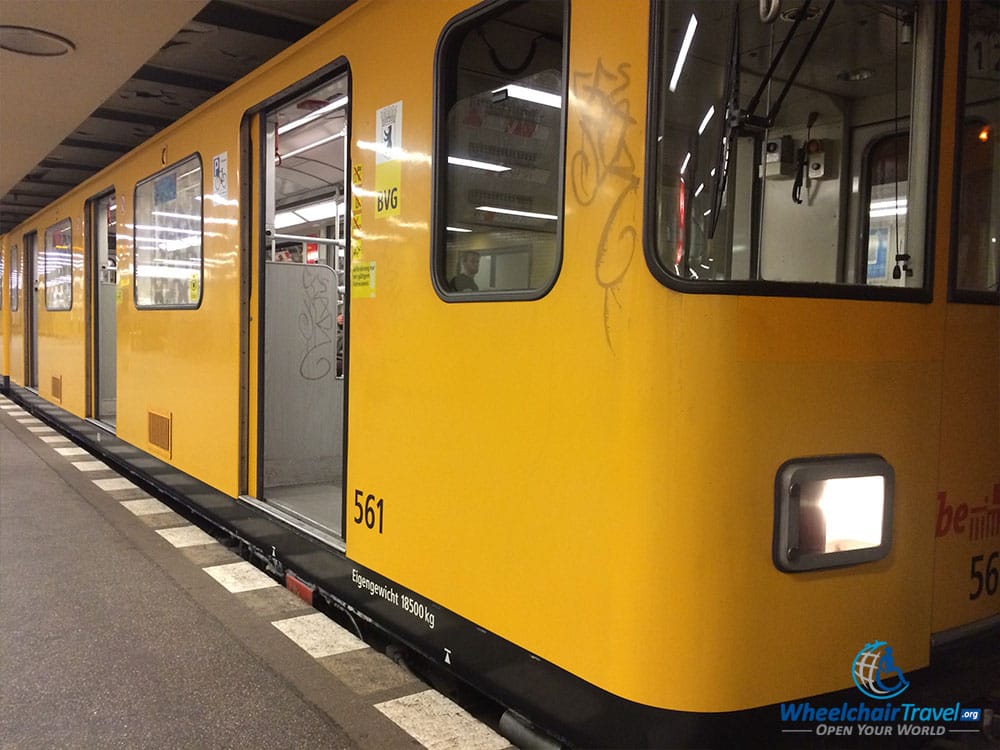
Some older models (yellow in color, pictured above) are uneven with the station platform, usually between 3 and 6 inches. Wheelchair users should flag the train’s operator in these cases, so that he/she can lay down a ramp to permit wheelchair access. I have seen these older train models most often on the U2 line.
The older trains do not offer a reserved wheelchair space, but newer U-Bahn trains do offer space for wheelchair users.
S-Bahn Train
The S-Bahn operates both above and below ground, much like the U-Bahn, but its stations/stops are spaced farther apart. The S-Bahn is an express service train serving a much larger area, including nearby suburbs and cities such as Oranienburg, Potsdam and Wannsee. The network of 166 stations is served by 15 numbered lines.
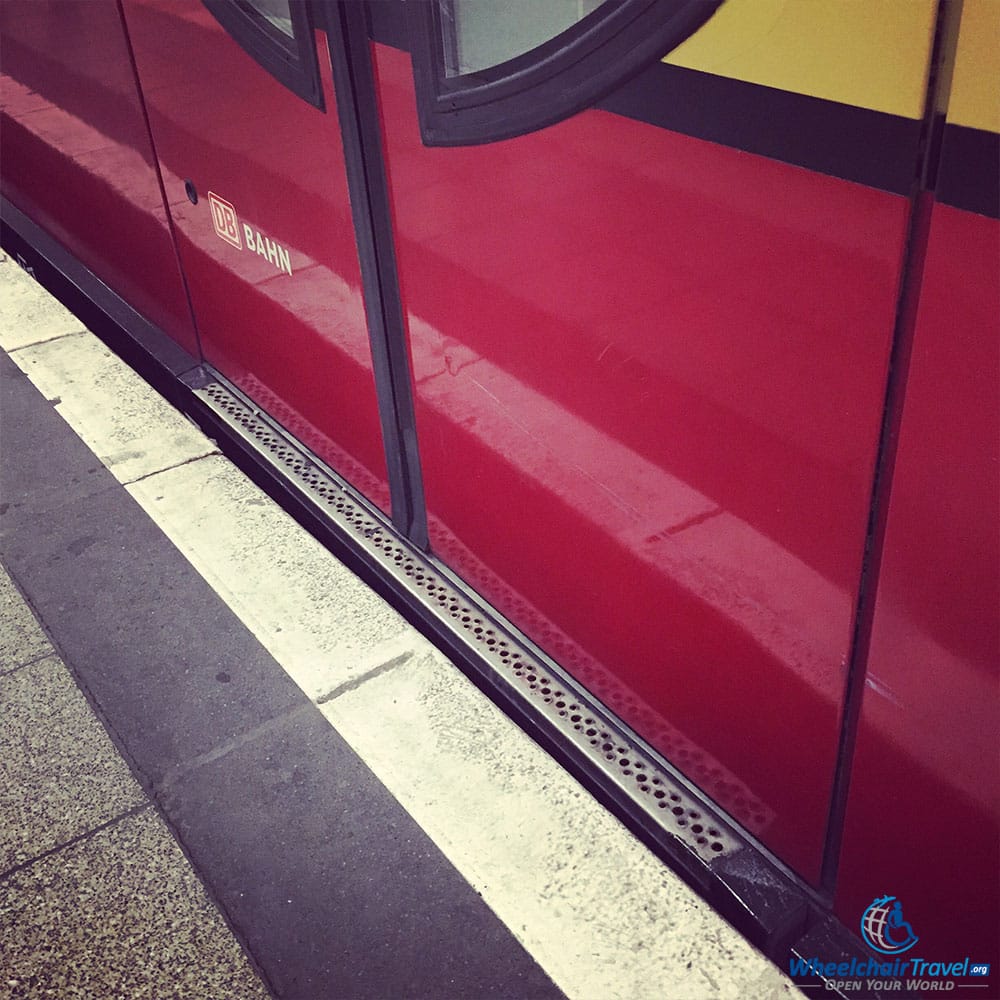
The majority of S-Bahn stations have elevators/lifts or ramps, making them wheelchair accessible. S-Bahn trains are level with station platforms, allowing wheelchair users to easily roll-on/off the train. Spaces for wheelchairs are available in each train car.
City Bus System
Berlin is served by an extensive city bus system with more than 350 routes/lines. The city bus fleet consists of some 1,300 buses, all of which are wheelchair accessible. The rear/center bus door is equipped with a manual ramp which the bus operator will extend for wheelchair users. All buses are equipped with a priority space for wheelchairs.
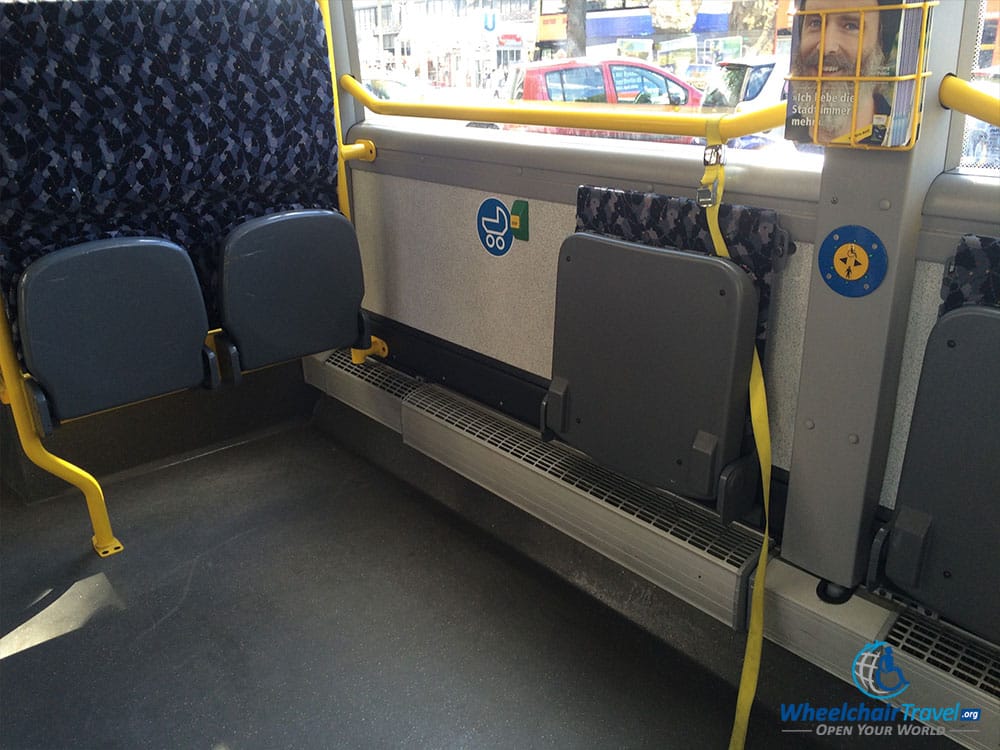
Different types of buses and lines make up the system. The most common are the normal bus routes, numbered 100 to 399, which operate in a traditional manner throughout the city and its suburbs. Line 100 is perhaps the most popular for tourists, running between Alexanderplatz and the Zoological Garden, passing many of the city’s top sights.
In addition to the some 300 normal bus lines, the city has 17 MetroBus lines which run every 10 minutes, around the clock. MetroBus line numbers begin with an M (i.e.: M11 or M12).
The ExpressBus is a rapid or express bus service with fewer stops. The 13 ExpressBus routes operate between the city center and various suburbs. ExpressBus service is also available to both airports. These routes are numbered beginning with the letter X (i.e.: X11 or X12). Berlin Schönefeld International Airport (SXF) is served by bus X7. Berlin Tegel International Airport (TXL) is served by bus X9.
The NightBus is composed of 45 routes which are serviced in the late evening and overnight. NightBus routes are numbered beginning with the letter N (i.e.: N11 or N12). Buses N1 through N9 service U-Bahn routes which do not operate late at night.
For a list of all city bus routes, including MetroBus, ExpressBus and NightBus routes, visit bvg.de.
Berlin Tramway
The Berlin on-street tramway consists of 22 lines, 9 of which are high frequency MetroTram lines that operate 24 hours a day.
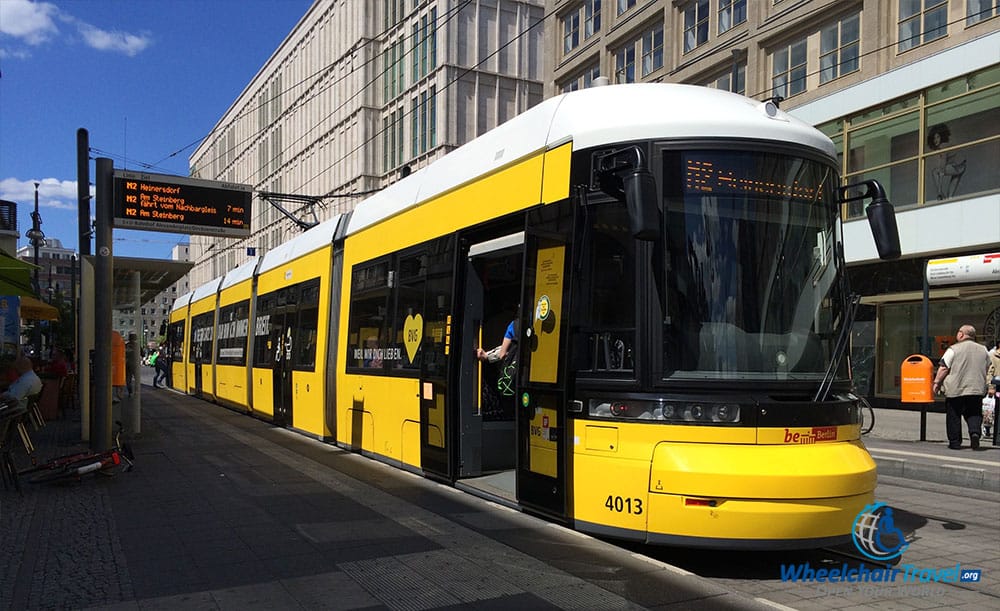
Most routes and tram vehicles are wheelchair accessible, via a ramp that extends from the floor. This ramp can be deployed my the tram operator, and wheelchair users wishing to board should flag the operator. The ramps located at a door near the center of the train, which is marked with wheelchair and pram (stroller) icons.
Routes that operate around the clock begin with an M. The MetroTram 24-hour routes are: M1, M2, M4, M5, M6, M8, M10, M13 and M17. Use the BVG journey planner to plot an accessible route using the tram and other public transportation systems.
DB Bahn Regional Rail + International Rail
Deutsche Bahn operates the city’s S-Bahn trains, but also regional rail throughout Germany. DB Bahn regional trains to other German and European cities depart from the city’s central terminal, Berlin Hauptbahnhof.
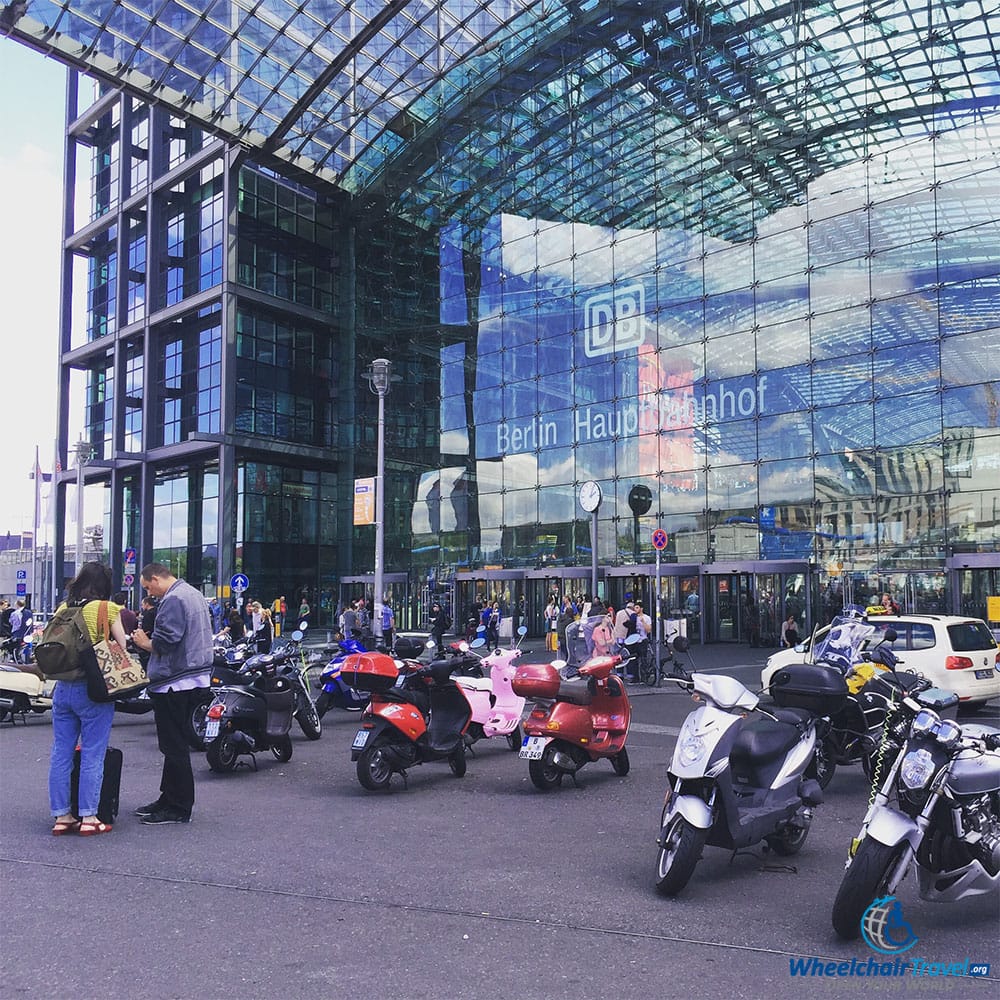
The Berlin Hbf train terminal can be accessed via city bus, U-Bahn or S-Bahn. Service is available from Berlin to many German cities, including Dresden, Dusseldorf, Frankfurt, Hannover, Munich, Nuremberg and Stuttgart, among others. International rail service is also available here.
DB Bahn regional rail and Regional Express service is wheelchair accessible. Disabled passengers should arrive early to request wheelchair lifts or ramps. For information on the disabled accommodations available on the DB Bahn, visit Bahn.de.
For schedules, route maps and times or to purchase tickets online, visit Bahn.de. Tickets and fares for the DB Bahn regional trains are exclusive of Berlin’s local public transportation system.
Fares, route maps and schedules
Fares on the city’s bus, tram, S-Bahn and U-Bahn systems are based upon distance traveled. The city of Berlin and the surrounding suburbs have been divided into three tariff zones, A, B and C. Tariff zone A covers Berlin’s city center. Single-zone tickets are available, as are combined zone AB, BC and ABC tickets. The following fare structure is in place:
Single zone/short-trip ticket: €1.60
Single ticket, zones AB: €2.70
Single ticket, zones BC: €3.00
Single ticket, zones ABC: €3.30
Extension ticket (add a zone): €1.60
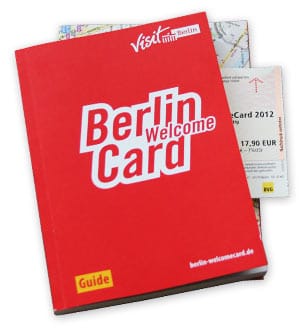
The Berlin WelcomeCard offers visitors to the city a way to purchase unlimited ride passes for a 48-hour, 72-hour or 5 days period of validity. WelcomeCards may be purchased in two variants — a card valid for travel within zones A and B or a pass valid for zones A, B and C, which includes S-Bahn travel to and from the city of Potsdam. The Berlin WelcomeCard can be purchased at airports, convenience stores and S+U-Bahn stations. Cards come with a booklet of some 200 discounts for restaurants, shops and attractions within the city, plus a map of the city’s transit systems. The cost of the WelcomeCard is as follows:
48 hours, zones AB: €19.50
48 hours, zones ABC: €21.50
72 hours, zones AB: €26.70
72 hours, zones ABC: €28.70
5 days, zones AB: €34.50
5 days, zones ABC: €39.50
For more information on the Berlin WelcomeCard or to order one online, go to VisitBerlin.de.
Route maps, schedules and more are available via the links below:
- For a map of the S-Bahn & U-Bahn systems, CLICK HERE (PDF).
- For public transportation directions & accessible journey planning, CLICK HERE.
- To check for elevator outages at S+U-Bahn stations, CLICK HERE.
- For bus times, schedules and directions, CLICK HERE.



